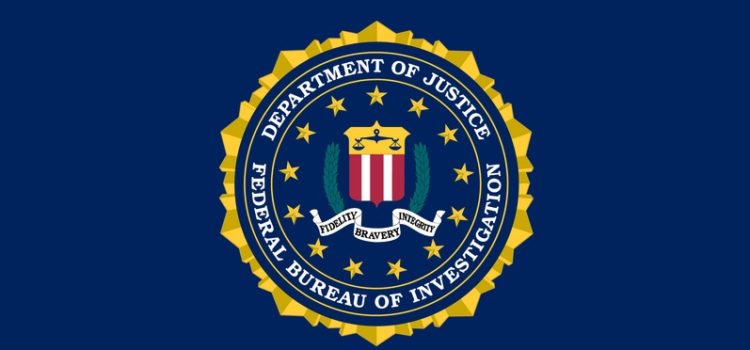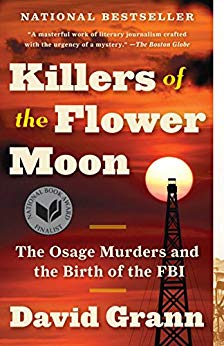

This article is an excerpt from the Shortform summary of "Killers of the Flower Moon" by David Grann. Shortform has the world's best summaries of books you should be reading.
Like this article? Sign up for a free trial here .
How and when did the FBI become the large, powerful agency we know today? How was the Bureau involved in the Osage murders?
Two major events in the 1920s changed the course of FBI history: the appointment of J. Edgar Hoover and the investigation into the Osage murders. The FBI gained publicity and prove its competency.
Keep reading to learn about this monumental time in FBI history.
FBI History: J. Edgar Hoover vs. Tom White
J. Edgar Hoover is by far the most famous and powerful director in FBI history. But, not everyone was on board with Hoover’s aggressive policies, especially when it came to publicity.
J. Edgar Hoover
In the early years of FBI history, the Bureau was beset by a reputation for corruption and was embroiled in the scandals that had rocked the administration of President Warren G. Harding. With its propensity for accepting bribes and enabling all manner of corruption, it became known in the press in the early 1920s as “The Department of Easy Virtue.” In 1924, President Calvin Coolidge’s Attorney General, Harlan Fiske Stone, appointed the 29-year-old J. Edgar Hoover to head up the Bureau, thereby changing FBI director history forever. His post was meant to be temporary, with a mandate to clean up the agency and restore its tarnished public reputation—but Hoover was to remain in his position until his death in 1972, nearly half a century later.
Over the years, Hoover would amass enormous bureaucratic power, with his reign spanning eight presidencies. The Bureau of Investigation, which, in 1935, was renamed the Federal Bureau of Investigation (FBI), would eventually come to operate as a state-within-a-state, immune from scrutiny or accountability by elected officials of either major U.S. political party. With its unmatched intelligence-gathering capabilities, the FBI would blackmail politicians and harass and intimidate its perceived enemies—often including alleged Communist sympathizers and civil rights activists.
But all that lay in the future. In 1925, Hoover was a mid-level bureaucrat, in charge of an obscure federal agency that had earned a sordid reputation for corruption and incompetence. That summer, Hoover summoned Tom White to headquarters in Washington, D.C. to assign him to the Osage case. Hoover had initially been leery of taking on the case again, especially after the Blackie Thompson catastrophe. He had strived to keep the Bureau’s involvement in the Osage case out of the press, fearing it would only amplify public scorn. But the affair was a growing scandal, one which threatened to engulf the Bureau and taint Hoover’s career. He was under great political pressure to correct the situation.
Hoover was a relentlessly ambitious figure, and he saw in the Osage case an opportunity to flex his agency’s muscles and impose his modern vision of law enforcement. He would use the Osage murders to build up the organization that would, in 1935, become the all-powerful FBI and change the image of American law enforcement, from one of rugged frontier lawmen to sober, rational, scientific, and professional investigative agents. It was a move that would forever change FBI history.
A product of the reform-minded Progressive Era of American governance, Hoover was obsessed with rules, procedure, and efficiency, running his agency with an almost fanatical zeal and exercising exacting control over his agents’ behavior. He demanded precision and consistency and required all agents to file their typed reports within a standardized system—a culture shock to the many cowboys and frontiersmen whom the Bureau still employed at this time. He had a concrete idea of how an agent ought to look and behave—they should be white, clinical and lawyerly in demeanor, dressed in dark suits, neckties, and black polished shoes. His ideal was a far cry from the cowboy hat-wearing, six-gun-shooting county sheriff of popular imagination.
Tom White
Though you may not have heard of Tom White, he played an important role in FBI history. In the summer of 1925, Tom White was the special agent in charge of the Bureau’s Houston office. White straddled two worlds—on the one hand, he was an old-style lawman with no formal police training, a former Texas Ranger who had spent most of his career pursuing bandits on horseback throughout the Texas frontier, armed with a six-shooter. With his Stetson hat, he even looked like a caricature of the mythical Western lawman, still known to carry his trusty six-shooter when he was on dangerous assignments with the Bureau.
But on the other hand, despite his rough-and-tumble background, Tom had a reputation as a restrained, methodical investigator. Even during his days with the Rangers, a force well-known for its shoot-first methods, Tom had been different. He had discovered that careful observation and a methodical approach were more effective in catching criminals than running around the countryside, guns blazing. Tom recognized that many of his fellow Rangers were little more than violent criminals with badges and saw that it was a very fine distinction between a good man and a bad one. He knew that it was dangerous for one man to have the unrestrained ability to take a life, even if he was acting with the sanction of the law.
Tom’s father, Emmett, had been a sheriff in the wild land of Central Texas in the late 19th century. In those days, local sheriffs often were responsible for running the county jail and performing the executions of convicted criminals—Tom first saw his father hang a man from the gallows in 1894, when he was just an adolescent. The family lived next door to the jail, which held all manner of violent criminals, including murderers, rapists, arsonists, and robbers. Despite this harsh environment, Emmett did what he could to ensure relatively humane treatment of the prisoners in his custody and took a harsh stance toward anyone in the county who attempted to mete out vigilante justice—which, in Texas, often meant lynchings of black people.
Tom’s career in law enforcement was relatively bloodless, and he prided himself on the fact that he had never killed anyone in the line of duty, a rarity for an officer of his time and place. His approach to law enforcement was more modern and less bloodthirsty than his background would have suggested, and it earned him a strong reputation within the Bureau of Investigation.
Tom had joined the Bureau of Investigation in 1917, less than a decade after its creation. At the time, the Bureau’s jurisdiction was limited to a random assortment of crimes, including banking violations, interstate car theft, escapes by federal convicts, and, most importantly for the Osage case, crimes on Indian reservations.
FBI History: The Aftermath of the Osage Trial
The success in prosecuting the Osage murder case was a major coup for the Bureau of Investigation in FBI history—and for its ambitious and attention-seeking director, J. Edgar Hoover. Hoover crowed to the media that the case had been deemed unwinnable by everyone, including local sheriffs, county prosecutors, and even the Oklahoma Attorney General until the Bureau had stepped in.
Hoover used the glowing press from the Osage case to boost the Bureau’s image and position himself and his agency in the public imagination as the epitome of no-nonsense, professional, efficient, and effective law enforcement. Indeed, he was as relentless in his pursuit of headlines as he was of criminals. In the early 1930s, Hoover even arranged to have dramatized versions of the Bureau’s most famous cases (including the Osage case) serialized as popular radio dramas. In all of these fictionalized accounts, Bureau agents were presented as resourceful and quick-witted near-supermen, for whom criminals were no match.
As the years went on, Hoover’s power and influence only grew. In the 1930s, the FBI’s profile loomed larger when it took on infamous “Public Enemies” like John Dillinger, the Lindbergh baby kidnapper, organized crime figures, and other Depression-era outlaws.
But in his endless quest for publicity, Hoover neglected some key figures who had helped the Bureau achieve such great success—the actual agents in the field, men like Tom White. Although Hoover praised Tom’s work privately, he never shared the public spotlight with him. Over the years and decades that followed, Hoover maintained a cordial, if cool, public distance from the agent who had done so much to remake the Bureau’s image.
The Osage cases were a defining moment in FBI history. The FBI gained significant public trust and power during this time, and the incredible power they amassed would continue over the course of FBI history.

———End of Preview———
Like what you just read? Read the rest of the world's best summary of David Grann's "Killers of the Flower Moon" at Shortform .
Here's what you'll find in our full Killers of the Flower Moon summary :
- How the Osage tribe had vast oil wealth, but had it seized by their murderous neighbors
- The brutal and unresolved murders of Osage Native Americans
- The complicated history of the FBI in profiting from the Osage murders






